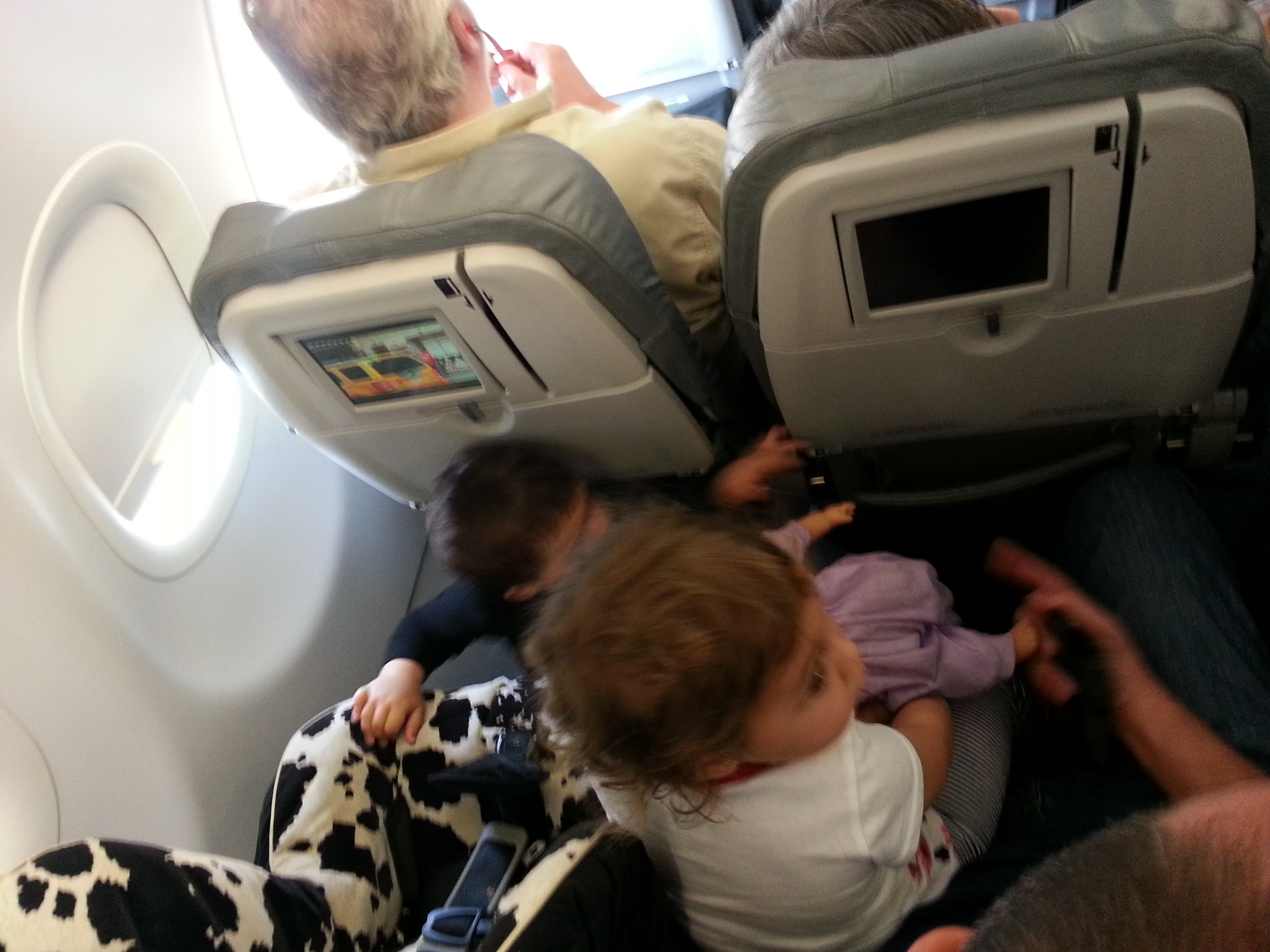New research based on data from inflight accidents has led doctors to reexamine the travel safety information given to parents of infants and toddlers.
These new recommendations for safer airline travel with an infant are based on a study of 114,000 in-flight medical events, collected over 5 years by the inflight medical equipment company MedAire and its parent company, International SOS, an air evacuation insurer. More than 11,000 of these events involved ages newborn to 18 years. The research team found the most common injuries were burns, contusions and lacerations, most commonly caused by spilled hot beverages or soups, followed by falls from the seat involving lap infants.
Dr. Paulo Alves of MedAire, comments, “Of the cases involving children requiring medical help, while the majority were the result of a pre-existing medical condition or health problem, more than 3% of cases involved an injury occurring during the actual flight. Of those cases, 35% involved children under the age of 2.”
Why you need travel insurance before booking your flight with your baby.
The research team shares the following safety recommendations to prevent avoidable injuries to infants and toddlers mid-flight.
1. Checkups help kids have a healthy trip. Discuss any pre-existing conditions or health issues with your pediatrician prior to traveling. Taking a preventative approach on the ground will avoid an in-flight emergency where options are limited.
2. Come prepared. Research showed the most common in-flight ailments for infants and children were gastrointestinal and respiratory related. Parents should travel with their own supply of common medications such as analgesics, antihistamines, and anti-emetics should they be needed in flight. Always keep them in your carry-on luggage, keeping in mind you will need travel size bottles for liquids to meet TSA guidelines.
3. Buy infants their own seat. If you can afford it, you should purchase infants a seat rather than have them travel as a lap infant. The safest option is to have a child secured using an FAA approved child restraint system (CRS) at all times. Use the CRS beyond takeoff and landing to avoid common injuries such as falling from a parent’s lap or into the aisle.
4. Choose the right seat. If that extra seat isn’t an option, the next best choice is a window or middle seat. Many in-flight injuries occurred when items fell from overhead bins; children fell into the aisle, collided with other passengers or the crew meal cart; or hot liquids were spilled being passed over other passengers. Keeping infants away from the aisle can reduce risks of common injuries as well as keep your little one more occupied.
5. Take turns keeping children occupied. If there is more than one adult traveling in your party, take turns staying vigilant to ensure the safety of the child while the other adult rests. The longer the flight, the more antsy the child will be; be sure to bring items to keep children occupied minimize the time that they are not using a CRS.
6. Practice safe sleeping. While it may seem obvious, the same safety risks that apply at home apply in the sky. Suffocation and SIDS (sudden infant death syndrome) related fatalities can occur anywhere. Be careful to ensure that your lap baby is not overdressed or overheating on the plane, allowing for good ventilation when sleeping on a parent.
7. If you do have an emergency, stay calm. Ask the flight attendant for assistance as soon as you identify any health concerns, the earlier the better. The flight crew is trained in first aid and knows what to do to help in an emergency, often utilizing remote medical assistance from emergency health care providers on the ground that can advise and assist.
Dr. Alves adds, “These are some simple precautions that parents can take to prevent or reduce in-flight illness and injury.” For tips on how parents can keep their sanity (and that of their in-flight neighbors) during plane flights with infants and toddlers, follow our 8 must-know, tried and true suggestions to make flying with baby easy.
Dear Reader: This page may contain affiliate links which may earn a commission if you click through and make a purchase. Our independent journalism is not influenced by any advertiser or commercial initiative unless it is clearly marked as sponsored content. As travel products change, please be sure to reconfirm all details and stay up to date with current events to ensure a safe and successful trip.
